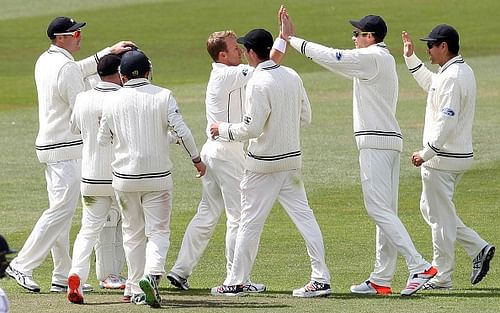
DRS in the fray again, as Jayasundera dismissal causes another controversy
The merits and the viability of the Decision Review System (DRS) has been a topic of intriguing debates and viewpoints, and it was back in the limelight again, when a not-out decision given by umpire Paul Reiffel in the favour of the Sri Lanka batsman Udara Jayasundera was overturned by the TV umpire Richard Kettleborough despite having no conclusive evidence on the hotspot or the snicko.
Sri Lanka bowling coach Champaka Ramanayake has found several inconsistencies in the DRS and has said that the system has ‘a lot of errors.’
"What I saw on the TV - it looked like not out," he said. "I can't talk about the umpiring. We haven't spoken to anyone. Whatever the decision is made we have to take it.”
“We have to have a real serious think about this DRS system. There are a lot of errors."
It so happened that Jayasundra supposedly nicked a Doug Bracewell short ball which went into the gloves of the wicket-keeper BJ Watling. New Zealand appealed but the on-field umpire Reiffel gave it as not out.
The Blackcaps weren’t convinced and decided to review the decision. Now, the third umpire, Kettleborough, had to decide whether there was any conclusive evidence sufficient enough to overturn the on-field decision.
The real-time snicko showed no significant deflection as the ball passed the gloves and the bat. However, there was a faint mark on hotspot indicating something, but then the mark disappeared quickly leading one to believe that it would have been a gush of air due to the ball being in whiskering distance of the gloves.
However, there was nothing conclusive enough, either on the snicko or on the hotspot, for the TV umpire to believe that the batsman had gloved or nicked it.
Jayasundera, nevertheless, was given out, based on the deflection that was observed after the ball passed the bat. This deviation, when seen from a rear-view angle, was proved to be an optical illusion.
The replays from the rear angle did show a deviation initially, but when the split-screen view was shown by the broadcaster, combining the said view with a side-angle view, it was clear that the apparent movement of the ball did not occur when it passed the gloves or the bat.
It also showed that the deflection was seen in the rear angle camera well before the ball had even reached the bat. This cleared the confusion and led one to believe that although there was a deflection, it did not come off the bat/glove.
Kettleborough, however, did not ask for a split-screen view before pronouncing his decision, and gave the batsman out, much to the surprise of both, Jayasundera and the standing umpire Reiffel.
Having said that, it must also be told that the hotspot detects edges or deviations based on heat generated by the contact of the ball and the bat. However, it also detects any other kind of heat, as, for example, the one due to friction created due the ball being very close to the gloves in the aforementioned case.
Also, the snicko, detects edges based on sound, and whether both the technologies are always in synchronisation with each other is unclear.
